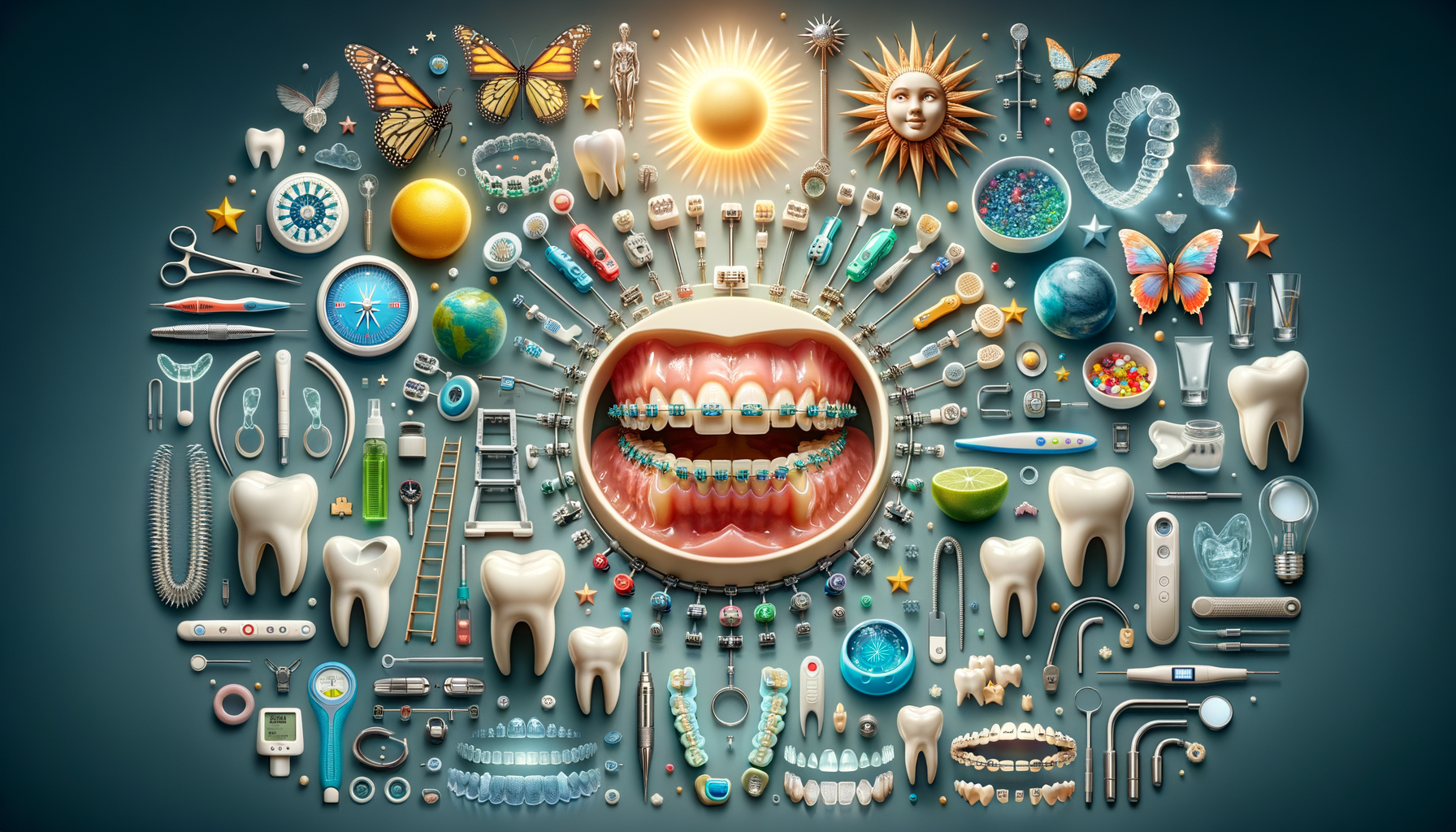Unveiling the World of Orthodontics: Aligning Smiles and Enhancing Lives
An orthodontist specializes in diagnosing, preventing, and treating dental and facial irregularities, focusing on aligning teeth and jaws to improve oral health and aesthetics.

Understanding the Role of an Orthodontist
Orthodontists are dental specialists who focus on correcting irregularities of the teeth and jaw. Their expertise goes beyond regular dental care to address issues like misaligned teeth, overbites, underbites, and crowded teeth. These professionals play a crucial role in improving oral health, which in turn enhances overall well-being. By using various appliances such as braces, aligners, and retainers, orthodontists aim to align teeth and jaws to achieve optimal function and aesthetics.
The journey to becoming an orthodontist is extensive. It begins with a general dental degree, followed by additional specialized training in orthodontics. This rigorous education ensures that orthodontists are well-equipped to handle complex dental issues. They work closely with patients to develop personalized treatment plans that cater to individual needs, ensuring effective and efficient outcomes.
Orthodontists also play a preventive role by identifying potential dental issues early on. Early intervention can often prevent more serious problems from developing, saving patients time and discomfort in the long run. This proactive approach is particularly beneficial for children, as it can guide proper jaw growth and tooth alignment during their developmental years.
Common Orthodontic Treatments and Techniques
Orthodontic treatments have evolved significantly over the years, offering a variety of options to suit different needs and preferences. Traditional metal braces remain a popular choice, especially for complex cases. These braces consist of metal brackets and wires that gradually shift teeth into their desired positions. They are known for their durability and effectiveness.
For those seeking a more discreet option, clear aligners have become a favored alternative. Made from transparent plastic, these aligners are virtually invisible and can be removed for eating and cleaning. They are particularly popular among adults who wish to straighten their teeth without the noticeable appearance of metal braces.
Another innovative technique is the use of lingual braces, which are placed on the backside of the teeth, making them invisible from the front. This option is ideal for individuals who require the strength of traditional braces but prefer a more concealed treatment.
Orthodontists may also use other appliances, such as palatal expanders and headgear, to address specific issues. Palatal expanders are used to widen the upper jaw, creating more space for teeth alignment, while headgear can correct jaw alignment by applying pressure to the teeth and jaw.
The Benefits of Orthodontic Treatment
Orthodontic treatment offers a myriad of benefits that extend beyond a beautiful smile. Properly aligned teeth contribute to better oral hygiene, as they are easier to clean and maintain. This reduces the risk of cavities, gum disease, and other dental issues. Additionally, orthodontic treatment can alleviate problems like jaw pain, headaches, and speech difficulties caused by misaligned teeth.
From a psychological perspective, a well-aligned smile can boost self-esteem and confidence. Many individuals report feeling more comfortable and self-assured in social and professional settings after completing orthodontic treatment. This positive impact on mental health is an often-overlooked benefit of orthodontic care.
Furthermore, orthodontic treatment can improve bite function, allowing for better chewing and digestion. This is particularly important as proper digestion begins in the mouth, and well-aligned teeth play a crucial role in breaking down food effectively.
Choosing the Right Orthodontist for Your Needs
Selecting the right orthodontist is a critical step in achieving successful treatment outcomes. When choosing an orthodontist, it’s essential to consider their qualifications, experience, and reputation. Many orthodontists offer initial consultations where you can discuss your concerns and explore treatment options. This is an excellent opportunity to assess whether the orthodontist’s approach aligns with your expectations.
It’s also beneficial to seek recommendations from friends, family, or your general dentist. Personal experiences can provide valuable insights into an orthodontist’s practice and patient care. Additionally, reading online reviews and testimonials can give you a broader perspective on patient satisfaction and treatment success.
Cost is another factor to consider. Orthodontic treatments can vary in price, depending on the complexity of the case and the type of appliances used. Many orthodontists offer payment plans or financing options to make treatment more accessible. It’s important to discuss these options during your consultation to ensure that the financial aspect aligns with your budget.
Conclusion: Embracing the Path to a Healthier Smile
Orthodontic treatment is a transformative journey that can significantly enhance both oral health and personal confidence. By understanding the role of an orthodontist, exploring various treatment options, and recognizing the benefits, individuals can make informed decisions about their dental care. Choosing the right orthodontist is a crucial step in this process, ensuring that you receive personalized and effective treatment tailored to your unique needs.
Whether you’re considering orthodontic treatment for yourself or a loved one, the path to a healthier, more beautiful smile is within reach. Embrace the opportunity to improve your oral health and boost your confidence with the help of skilled orthodontic professionals.